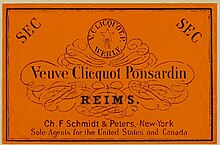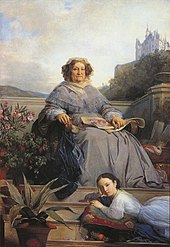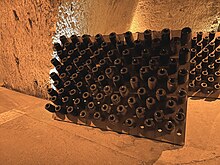Deciphering Champagne: Big House vs. Grower
Champagne has long held a special place in the hearts of American revelers, with well-known big-house brands like Veuve Clicquot, Moët & Chandon, and Dom Perignon gracing occasions from high-profile weddings to exclusive VIP lounges and glittering New Year’s Eve celebrations across the nation. While these renowned labels have their charm, a growing number of Champagne enthusiasts are turning their attention to the nuanced experience offered by grower Champagne – a choice that embodies intimacy, authenticity, and uniqueness.
To grasp the essence of this evolving trend, let's explore the distinctions between Champagne houses and grower Champagne. Big houses, often referred to as “maisons” or “Grandes Marques,” are expansive enterprises that produce Champagne using grapes sourced from both their own vineyards and those owned by growers throughout the Champagne region. With a substantial workforce across the 370 big houses in Champagne, each vineyard's grapes undergo separate vinification processes, followed by blending to create the distinctive taste profile associated with the brand. Big-house Champagne constitutes approximately 85 percent of total Champagne exports globally and is readily available at grocery stores and wine shops in the U.S. In contrast, Grower Champagne represents a smaller share, around 15 percent of exports, and while gaining popularity beyond France, it can be a rare find in the U.S. Grower Champagne is crafted by individuals who not only produce the grapes but also cultivate the vines. Out of over 16,200 growers in Champagne, fewer than 5,000 produce their own Champagne, utilizing grapes from their own land. These small, family-run enterprises produce limited quantities of wine, employing methods passed down through generations.
Champagne Region, situated about 100 miles northeast of Paris, is characterized by a unique Terroir that boasts mineral-rich soil, remnants of an ancient marine bed, and a distinctive dual climate. The oceanic climate brings consistent rainfall and moderate seasonal temperatures, while the continental climate offers summertime sun but often brings harsh winter frosts. While all Champagne leverages this diverse terroir, grower Champagne places it at the forefront.
Unlike big houses that blend wines to achieve a consistent product, growers embrace their unique environment, nurturing what nature provides through sustainable and biodynamic practices. The resulting wine is distinctive and reflective of the individual vineyard where the grapes are cultivated.
Growers reprsent the tue hands-on craftsmanship. They have complete control over every stage of the Champagne-making process – from growing and harvesting grapes to blending, deciding whether to blend, and determining any dosage added to let the grapes' natural qualities shine. With meticulous attention, they monitor the wine's quality throughout, ensuring that the bubbles in the glass are of the utmost excellence.
While these carefully cultivated and crafted grower Champagnes may be challenging to find, they hold a unique allure. Each bottle narrates its own story, embodying the origin and craftsmanship behind its creation. While big-house bubbles may suit some, those in the know are reaching for the distinct and authentic experience offered by grower Champagne. Cheers to the journey of discovery in every sip!
Veuve Clicquot: an Extraordinary Trailblazer in Champagne History



Hello! In honor of Women's History Month, I wanted to dedicate this blog to the remarkable story of Madame Clicquot, a true pioneer in the world of Champagne.
Madame Clicquot, born Barbe-Nicole Ponsardin in 1777, became a widow (veuve in French) at the age of 27 when her husband, François Clicquot, founder of a Champagne house based in Reims, passed away in 1805. Instead of handing over the reins to a male relative, as was the tradition at the time, she took control of the family Champagne business and on 21 July 1810, she named it Veuve Clicquot Ponsardin.
In the early 19th century, the Napoleonic Code denied women civil and political rights, prohibiting them from working, voting, earning money, or entering schools and universities without the consent of their husband or father. At that time, widows were the only women in French society to be free and to be allowed to run their own business.
One of Madame Clicquot's most significant contributions was the development and refinement of the riddling process, which is a crucial step in the production of sparkling wine. Riddling involves gradually tilting and turning bottles to allow sediment to collect in the neck for later removal. This technique significantly improved the clarity and quality of Champagne. Prior to her innovations, Champagne production faced challenges with sediment and clarity. Madame Clicquot's method of turning and tilting bottles facilitated the removal of sediment, resulting in clearer and more refined Champagne.
Madame Clicquot is credited with creating the first known single-vintage champagne in 1810. The concept became a huge success the following year when the iconic 1811 vintage champagne was labeled 'The Year of the Comet'. Today, vintage champagne is considered one of the highest-quality types of champagne and is highly sought after by collectors and champagne enthusiasts alike. Eight years later, she invented the first known blended rosé champagne by blending still red and sparkling white wines, a process still used by the majority of champagne producers.
Under Madame Clicquot's leadership, Veuve Clicquot expanded its global presence, gaining popularity not just in France but notably in Russia, where she became renowned after the Russians celebrated with her champagne the defeat of Napoleon. Subsequently, Madame Clicquot strategically extended her reach to other key markets, including the United Kingdom. Edouard Werlé, upon joining the company, embarked on numerous journeys throughout Central Europe. From 1841 onward, when Edouard Werlé officially assumed leadership, annual sales consistently exceeded 300,000 bottles. By 1850, the company achieved the sale of 400,000 bottles.
In the subsequent years, Edouard and his son Alfred played pivotal roles in advancing the business. They expanded by acquiring new vineyards and, in a bold move, introduced a yellow label for their wines in 1877 – an unconventional choice for champagne at that time. This distinctive label, registered under the trademark "Veuve Clicquot Ponsardin" Yellow Label, became iconic.
Madame Clicquot passed away at the Château de Boursault on July 29, 1866, at the age of 89. At the time of her passing, annual sales had soared to 750,000 bottles. Veuve Clicquot had become a major Champagne house and a revered brand, exporting its champagne from France to Europe, the United States, Asia, and beyond.
Recognized by her peers as "la Grande Dame of Champagne" newspapers worldwide paid homage to Madame Clicquot. Her remarkable story stands as a testament to her entrepreneurial spirit, unwavering determination, and innovative vision. Madame Clicquot's legacy continues to be celebrated in the realm of Champagne and extends as an inspiration beyond.
In 2001, Cecile Bonnefond became the first female president of Veuve Clicquot since the widow herself was running the company.
You know you want to
Sign Up For Our Newsletter
Keep up to date on the latest wine releases, events and promotions.